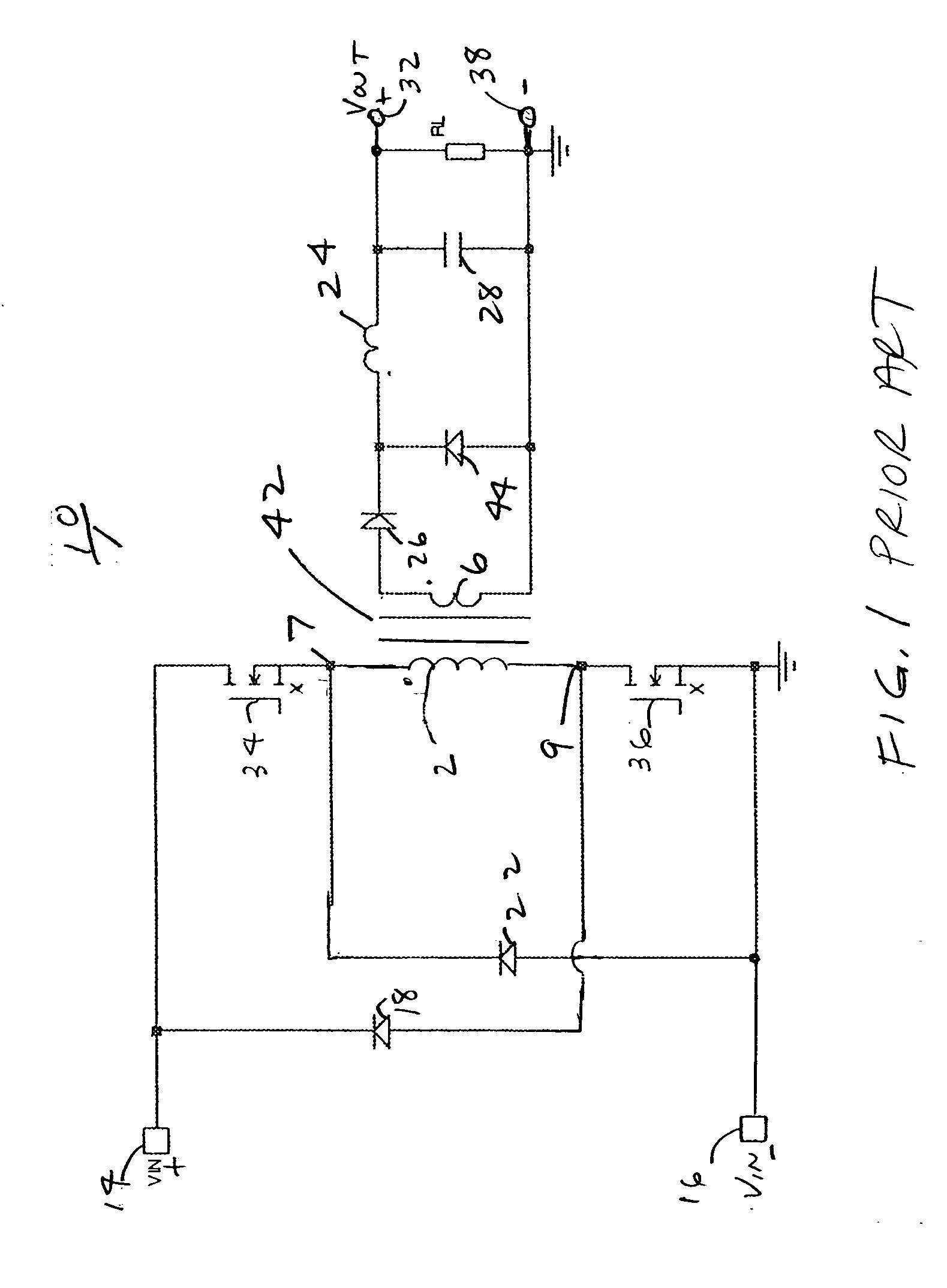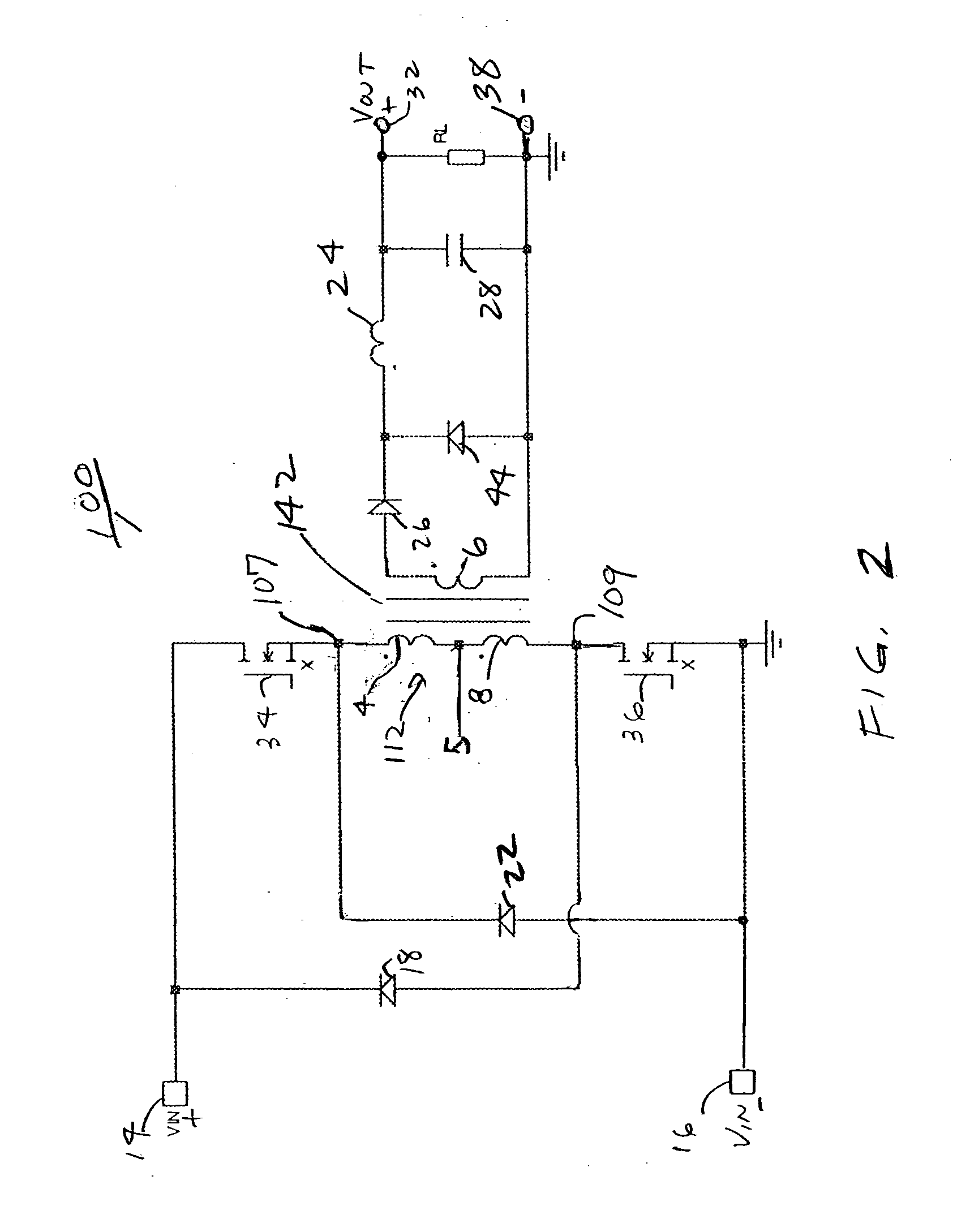Low noise planar transformer
a transformer and low-noise technology, applied in the field of transformers, can solve the problems of increasing electromagnetic interference (emi), not readily adaptable to miniaturization or automated assembly, and high manufacturing cost of components, so as to reduce common mode noise, improve emi performance, and reduce common mode noise.
- Summary
- Abstract
- Description
- Claims
- Application Information
AI Technical Summary
Benefits of technology
Problems solved by technology
Method used
Image
Examples
Embodiment Construction
[0039]FIG. 2 shows a circuit diagram for a two switch forward converter 100 having an embodiment of the transformer according to the present invention. Converter 100 has an input terminal 14 to which an input DC voltage, Vin, is coupled, relative to a ground potential at an input terminal 16, and an output terminal 32 where the output DC voltage, VOUT, of the converter is provided relative to ground. Converter 100 includes a transformer 142 having a primary winding 112 and a secondary winding 6. Primary winding 112 comprises a first winding 4 and a second winding 8. Each winding has a first and second end. The second end of the first winding 4 is connected to the first end of second winding 8, at a node 5. A power switch 34 is coupled between the first end of first winding 4 at a node 107 and input terminal 14. A power switch 36 is connected to the second end of winding 8 at a node 109. The power switch 34 is connected in series with first winding 4, second winding 8, and power swit...
PUM
 Login to View More
Login to View More Abstract
Description
Claims
Application Information
 Login to View More
Login to View More - R&D
- Intellectual Property
- Life Sciences
- Materials
- Tech Scout
- Unparalleled Data Quality
- Higher Quality Content
- 60% Fewer Hallucinations
Browse by: Latest US Patents, China's latest patents, Technical Efficacy Thesaurus, Application Domain, Technology Topic, Popular Technical Reports.
© 2025 PatSnap. All rights reserved.Legal|Privacy policy|Modern Slavery Act Transparency Statement|Sitemap|About US| Contact US: help@patsnap.com



